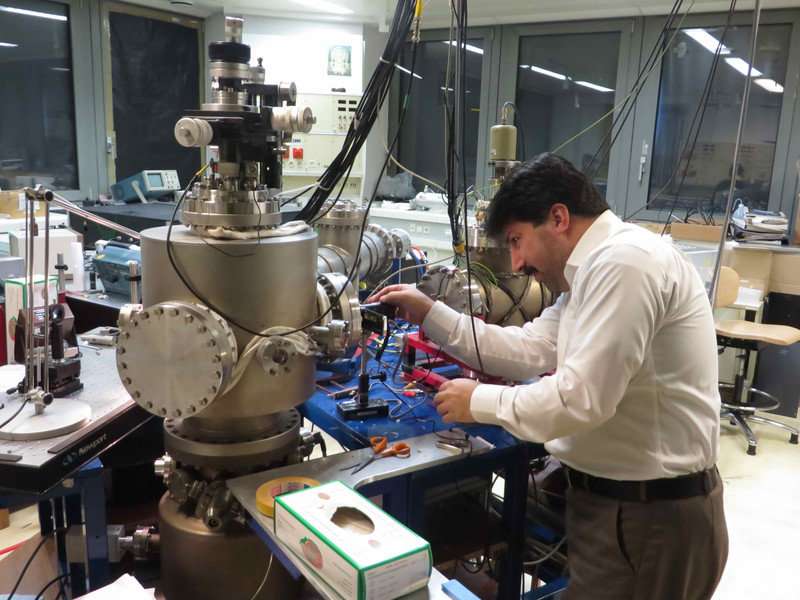Searching for the best 3-D-printing materials

TU Wien is conducting research into high-precision 3-D printing technology. Now, a new method is enabling researchers to look for suitable materials with greater precision than ever.
How is it possible to build a model of St Stephen's Cathedral the size of a dust particle? Well, using TU Wien's modern 3-D-printing technology, this is no longer a problem. Unimaginably fine structures in orders of magnitude well below a micrometer can now be created using their 3-D printer.
However, this process requires what are known as "initiator molecules," which have very specific physical properties. Using a new analysis method, developed at the Institute of Applied Physics at TU Wien, it is now possible to examine these molecules more closely and more quickly than was previously possible and thus identify which materials allow the technology to function best. Details of this technology were recently published in the physics journal Applied Physics Letters.
Resin cured by laser beam
It all starts with a liquid: the starting material for 3-D printing is a resin, which is cured at certain very specific points using a laser beam. In order for this to happen, a chemical chain reaction needs to be set in motion. Special initiator molecules are activated when they absorb photons from the laser beam, ultimately causing the resin to cure.
"In order to achieve as high a resolution as possible, it is important that the initiator molecules are not activated by a single photon but rather are only activated when they absorb two photons at the same time," explains Prof. Wolfgang Husinsky from the Institute of Applied Physics at TU Wien. "This two-photon process can only occur with the required probability where the laser light is at its strongest, i.e. exactly in the centre of the laser beam."
As such, the ideal initiator molecules are those that are influenced as little as possible by a single photon, but have a high probability of being able to absorb two photons at the same time. As these molecules are only activated in the centre of the laser beam, this gives a high degree of control over the points at which the resin is to be cured, allowing the production of 3-D objects with incredibly fine details.
It all depends on the wavelength
One thing that has often been neglected until now, is that many materials could make suitable initiator molecules, although only when using a laser beam with a wavelength that is exactly matched to the material. Until now, this was incredibly difficult to investigate. "You had to carry out the same experiment over and over again with different laser wavelengths, and you would have to recalibrate the experiment set up from scratch each time; in practice, this is almost impossible," says Aliasghar Ajami, the publication's lead author.
So, Aliasghar Ajami devised an entirely new method, which used ultra-short laser pulses with a duration of a few femtoseconds. "With these pulses as short as these, the wavelength is no longer strictly defined, so the laser beam no longer has one unique colour, rather it is composed of many different wavelengths," explains Ajami. Prisms are then used to disperse the light from these laser pulses. The beam is split into a two-dimensional 'sheet' of light which has different wavelengths on top to those below. "If you move the sample through this laser light in an appropriate manner, you can analyse how the molecules react to different wavelengths in one single measurement," explains Wolfgang Husinsky. "We are thus able to create a full two-photon absorption spectrum in one single working step."
More information: Aliasghar Ajami et al. Measurement of degenerate two-photon absorption spectra of a series of developed two-photon initiators using a dispersive white light continuum Z-scan, Applied Physics Letters (2017). DOI: 10.1063/1.4989917
Journal information: Applied Physics Letters
Provided by Vienna University of Technology





















